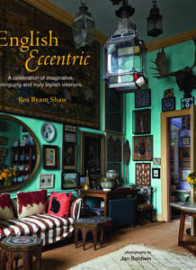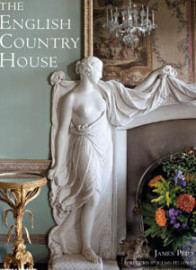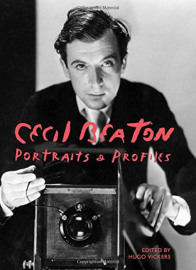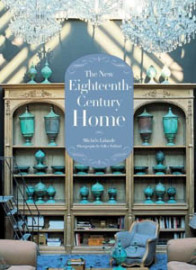The Bathroom Goes Global
Most histories of bathroom design have downplayed questions of distribution and dissemination, as well as issues of use and consumption. The spread of bathroom equipment or the waterborne infrastructural model that underlies it have not been adequately explained. The unspoken assumption seems to be that ‘superior’ forms of technology naturally supersede existing ones through a process of evolution. In these accounts, superior varieties take over and now-obsolete ones wither away in a one-way parade of progress. Yet this doesn’t stand up when we look more closely at the world in which we live. The best refutation of the ‘Darwinian’ model is the fact that now, over a century since the waterborne infrastructural system ‘triumphed’, traditional dry sanitation systems are making a comeback in some regions in the face of global concerns about water scarcity. And as already noted, in many countries they have never gone away or been replaced at all.
Sanyo’s Ultrasonic Bath and Washing Machine, Osaka World’s Fair, Japan, 1970
One of the revelations of my research was to discover that many alternative models of waste removal, from earth closets to vacuum systems, actually remained in use for many decades after the apparent triumph of waterborne sewerage systems in the developed world. Another revelation was just how many doubts about conventional sewerage and plumbing arrangements have been aired over the past century and a half by diverse thinkers from Karl Marx to Buckminster Fuller. Since the beginning of modern plumbing, many have questioned the wisdom of a system that uses the same water sources for drinking and for waste disposal. Just as nineteenth-century reformers could not understand the logic of a system in which local waterways were turned into local sewers – and inevitably became dangerously polluted – today some critics fail to understand the logic of treating all water to a potable standard, even that used for flushing toilets. One critic damningly sums up the paradox:
If I urinated and defecated into a pitcher of drinking water and then proceeded to quench my thirst from the pitcher, I would undoubtedly be considered crazy. If I invented an expensive technology to put my urine and faeces into my drinking water, and then invented another expensive (and undependable) technology to make the same water fit to drink, I might be thought even crazier.
In the face of such criticisms, we have to ask not only how a particular technology and system is established but also how it becomes so ‘locked in’ that change comes to seem impossible. Sewerage is, in fact, frequently cited as the quintessential example of a self-perpetuating system, mainly because the initial investment it requires is so large that alterations become prohibitively expensive, even if evolving circumstances makes change desirable. As urban planner Eran Ben-Joseph writes, ‘Historical decisions . . . have locked our current practice into a specific mode of operation.’
This is no less true of bathroom interiors. As the sociologist Harvey Molotch has argued, even the most modest bathroom interior has been shaped by many actors: organizations that set national standards and write model building and plumbing codes; governmental bodies empowered to adopt these standards and codes (or make up their own); public health and planning boards; water companies; bathroom manufacturers; sanitary engineers; architects; industrial designers; retailers; developers; plumbers; activists of all kinds; and, last but not least, users and consumers. Occasionally a single historical event has a strong and immediate impact, such as the Americans with Disabilities Act of 1990, which mandated that bathrooms in public buildings throughout the United States be made accessible to people with disabilities. More typically, however, bathroom design evolves over long periods of time in response to many largely anonymous forces.
This goes some way towards explaining why some of a bathroom’s most common features can, on reflection, seem strange or inexplicable. Something that bemused me, a North American, when I first moved to England, was the prevalence of pillar taps. Why did the English so often have separate taps for hot and cold water – which means that freezing cold and scalding hot water has to be swilled around to the right temperature in the basin – instead of a mixer tap that ensures water comes out at the desired temperature? Attempting to unravel this mystery, Molotch, another transplanted North American, quizzed the British Bathroom Council, two British designers of bathroom fixtures, several bath shops and numerous English friends, before concluding that pillar taps were simply a ‘style preference’. Style is undoubtedly part of it, but if I consider the case of my own pillar-tapped bathroom in London, the explanation is more prosaic. We kept the taps because changing them would have meant changing our sinks, too, and we wanted to spend our limited budget on new tiles and a heated towel rail instead. So the taps stayed; we adjusted.
While much valuable recent scholarship has analysed the inadequacies or inequities of existing bathrooms, too often it fails to question how and why these environments came into being in the first place. Understanding the mundane realities of inherited spaces, standardized designs, limited budgets and deeply ingrained conventions makes it possible to see why certain features endure in our domestic and public bathrooms, thwarting even the most determined of activists. And, equally important, the fact that the different needs and desires of users are often in conflict means that it can be difficult ever to agree on a coherent agenda for change. Molotch sums it up perfectly: musing on his largely failed attempt to erect unisex restrooms in his own queer- and trans-friendly department at New York University, Molotch concludes that, for any innovation to happen, ‘A whole lot of stars need to be aligned’ – that is, many actors need to believe in and show ‘love’ for the project for it to succeed.
Marian Loth, Lady P for Gustavberg Sphinx, 1999
Although there may not always be obvious answers as to why modern bathrooms operate and look the way they do, identifying the various forces at play in their production and dissemination is essential – and here architectural and design history can make a real contribution. Yet the anonymity and complexity of bathroom spaces poses some challenges for the historian. How can we do justice to the many different forces shaping bathroom spaces? How do we understand the motivating factors that drive each one? Accepting that the goal of completeness is unrealistic, I have opted to focus on how and why the waterborne model of sanitation and its associated spaces and equipment emerged, and how they were subsequently locked in locally, nationally and beyond. On the one hand, this is a story of mass production and of standards and codes of various kinds. But on the other, it is also one of how a particular model of sanitation and hygiene was ‘sold’ internationally. World expositions, hygiene fairs, model dwellings, trade catalogues, bathroom showrooms, Hollywood films – the entire modern apparatus of sales and promotion – are central to the story of the bathroom and extend it beyond physical space or the discourses of engineering and production.
Many of the innovations, companies, standards and events that I focus on initially are British and later American, for the simple reason that, until very recently, Britain and the United States have been the two most influential shapers of modern bathroom culture. Many bathroom elements have existed for millennia – baths and lavatories, for example – but it was British inventors and manufacturers who, from the 1850s onwards, first began to make high-quality goods at scale, lowering costs and making them affordable for a wider cross-section of the populace. Moreover, the British were the acknowledged world leaders in the most genuinely revolutionary sanitary technology of all: the water closet. And from the nineteenth century it would be not only specific British bathroom products and technologies but also the country’s entire sanitation model that were adopted by, and exported to, cities across Europe and to its colonies.
Lars Ramberg, Liberte, National Museum of Art, Oslo, Norway, 2005
For the story of how Western bathrooms came to be locked in is not only a story of trade but also a story of empire, colonial expansion and war. Many countries’ water infrastructure dates back to colonial times and was built with reference to the ‘home’ nation. In 1927 the Columbia University political scientist Parker Thomas Moon described such infrastructural interventions (approvingly) as ‘sanitary imperialism’. As American and European sanitary models reshaped colonial cities from Mumbai to Manila, colonial subjects were themselves ‘modernized’ through their encounters with new sanitary technologies and theories of hygiene. It is important not to overstate the practical success of these projects, but scholars have argued that the symbolic importance of infrastructure and the accompanying fear of dirt and disorder retain a firm hold on post-colonial governmental policy-making. And the flush toilet itself remains a potent indicator of progress.
Despite the widespread dismantling of empires after the Second World War, the exportation of the Western bathroom continued as part of the process of Americanization. In tracing the rapid change in Japanese bathroom culture following the Second World War, Rose George notes the influence of American troops who expected to use the same facilities overseas as at home. (The transformation was likely well advanced by this point: already in 1933 the writer Jun’ichiro Tanizaki was elegiacally lamenting the replacement of the dim, camphor-scented, outdoor toilet with the glaringly lit, white-tiled, indoor one.) Increasingly, however, American-style sanitation and hygiene were carried abroad by multinational businesses. McDonald’s was the most influential in this regard, as the fast-food chain sparked what the anthropologist James L. Watson describes as a public hygiene ‘revolution’ among East Asian consumers. Meanwhile, Western manufacturers of sanitaryware were themselves becoming more international. Although they had long exported vast quantities of their goods, in the 1950s and ’60s they opened factories in countries such as South Africa, Malaysia and India to serve new markets. Starting in the 1980s the situation shifted again, as even the most venerable companies were consolidated into larger, multi-national entities: the British company Twyford, for instance, is now owned by the Icelandic bathroom giant Sanitec, while American Standard is owned by the private equity firm Sun Capital, with Mitt Romney’s former company, Bain Capital, as a minority partner. And the majority of sanitaryware companies now manufacture a large portion of their products in Asia.
Another significant factor in the bathroom’s spread has been the rise of mass tourism and of global events such as world expositions and the Olympics. Standardized pictograms to represent ‘men’ and ‘women’ were first introduced at the 1964 Tokyo Olympics. Since then, the installation of sex-segregated public facilities complete with pictograms and throne-style toilets has become a crucial way for countries to make their claims to civility and world-class status. Just consider the initiatives to build Western-standard public toilets in preparation for global sporting events, such as for the 2002 South Korea and Japan World Cup or the 2008 Beijing Olympics. These events have left a lasting imprint, and Southeast Asian countries now lead the international crusade for sanitary facilities. The former mayor of Suwon, South Korea, Sim Jae-duck, founded the World Toilet Association; such was his belief in the cause that, in advance of the WTA’s inaugural meeting in 2007, he built a US$1.1 million house shaped like a toilet. The WTA has since been joined by the Singapore-based World Toilet Organization, run by social entrepreneur Jack Sim, who fully deserves his reputation as the planet’s most dynamic campaigner for sanitation. Sim is also planning yet another monument to toiletry: the World Toilet Museum, shaped like three interlocking toilet rolls.
Monica Bonvicini, Don’t Miss a Sec, 2003-4. Interior of two-way mirror structure.
Preparations for the World Expo in Shanghai in 2010 also featured the by-now-familiar push to remake the city’s bathroom culture. Expo 2010 drew over 72 million visitors and was reputed to be most expensive global event ever staged. In the same way that thousands of Olympic Toilets were installed throughout Beijing (with five-star models at tourist sites), Model Toilets were installed throughout Shanghai, with an impressive barrage of signage to enable people to locate them. And on the exhibition site itself, bathrooms were everywhere, queue-less, clean and available in ‘Western’ (throne) or ‘Asian’ (squat) models. However, appropriately enough in an event devoted to intercultural communication, a large number of Chinese visitors seemed not to discriminate. In the Ladies, many women entered whatever stall was nearest and went about their business with the doors wide open, the legacy of using communal facilities without doors. Through one open door I caught a glimpse of an older woman perched acrobatically on the seat of a throne toilet, transforming it into an instant squat.
As this anecdote reminds us, Western-style bathrooms and their associated fixtures and behaviours are not always embraced or translated exactly into other contexts. In the case of China, for instance, villagers resist indoor bathrooms because, sensibly enough, they don’t wish to bring dirt into their homes (hence confirming historian Dominique Laporte’s remark that the ‘privatization of waste’ – the shift from outdoor to indoor toilets – is a process ‘whose universality is not a historical given’). And when Western bathrooms are introduced into middle-class homes, from Ankara to Jakarta, Moscow to Karachi, they are usually modified to suit local customs or traditions. Religion is a particularly important influence in the production of hybrids: one example is that, in Islamic countries, Western-style bathrooms are installed with ‘Muslim showers’ (bidet-like hand sprays for washing oneself after toilet use).























